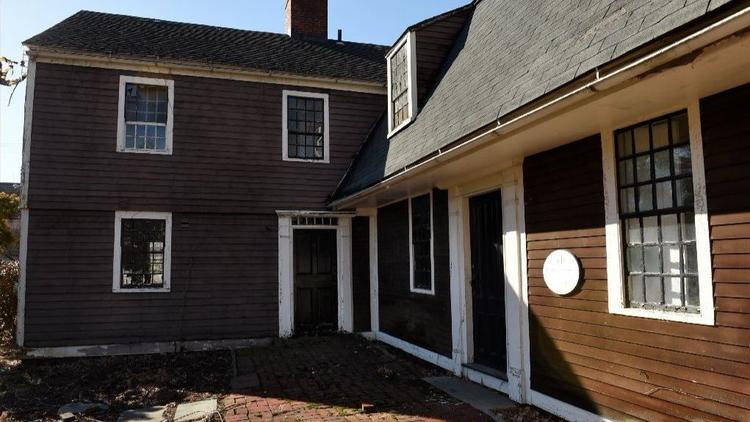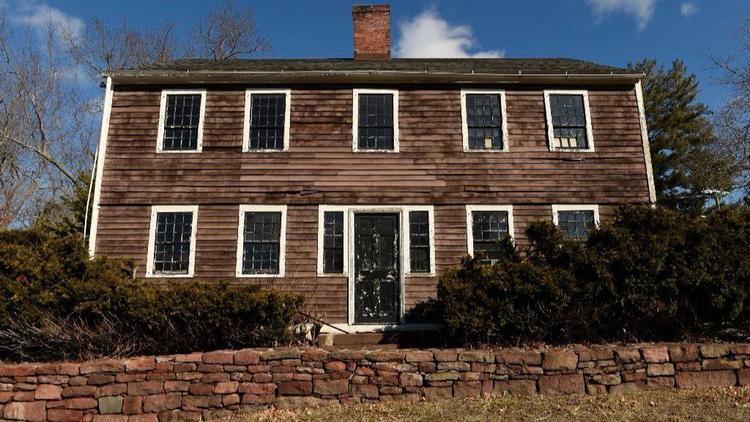
Home
 Structural Products & Services, Stairlifts
Structural Products & Services, Stairlifts
Furniture, Clocks,
Accessories
Antiques, Folk Art,
Fine Art, Auction Houses
HISTORIC FARMINGTON HOUSE AT RISK FOR DEMOLITION |
|
The Woodford-Newell-Strong House has long been a part of Farmington’s fabric.
For centuries, the structure at the corner of routes 4 and 10 has weathered numerous historic milestones like the American Revolution and the Amistad slave rebellion.
It’s just one of 15 surviving houses in Farmington that either partially or wholly date back to the 1600s, according to town historian Betty Coykendall. In total, 66 homes in Farmington were built before the 1800s, Coykendall said.
“Every one is precious because there aren’t very many of them and most of them are connected to a long litany of things that happened in this town,” she said.
With that in mind, local groups are fighting to preserve the Woodford-Newell-Strong House, the second push in recent years to preserve one of Farmington’s oldest buildings as it faces demolition. Farmington Historical Society President Portia Corbett said residents believe history is integral to Farmington’s identity.
“It’s an example of how the heart and soul of Farmington is within its people and its structures,” Corbett said. “These are visible reminders of what we were and are — still — how we preserve our history, how we’re interested in our history [and] how we build on our history.
“I think that’s the lesson: If it’s not preserved, we will have lost something because, once it’s gone, it’s gone. It can’t be reproduced.”
Newington-based One Waterville Road LLC purchased the building for $895,000 in 2007, according to local property records. Four years later, developers proposed building a TD Bank with a drive-thru ATM on the property, town planner William Warner said, while preserving the historic house.
But the town plan and zoning commission ultimately rejected the project over traffic concerns, Warner said. The matter went to court and the town settled because the property is bordered by two state roads, making traffic a state issue rather than a local issue, Warner said.
Warner said that, because of the year and a half spent in court, the developer lost TD Bank as a tenant for the project.
A second proposal came to the commission late last year, but the developer withdrew it in early January. By the end of that month, a demolition permit had been filed for all the buildings on the property, including the Woodford-Newell-Strong House.
David Occhialini of Reno Properties Group, which owns the property, did not return repeated requests for comment.
Town officials notify local historical agencies when a demolition permit is filed on a structure older than 75 years old. Those groups can then request a 90-day demolition delay, which has been done in the case of the Woodford-Newell-Strong House.
That 90-day period is used to work with the developer to find a way to avoid the demolition, or to reach a compromise, Warner said. In the case of the Woodford-Newell-Strong House, that time frame will expire by the end of April.
But the ordinance in place provides little protection. The town plan and zoning commission has no jurisdiction over demolition permits.
Corbett said the historical society wasn’t necessarily shocked to learn about the demolition permit, but rather “disappointed.”
The situation is particularly fresh just two years after a developer planned to demolish the historic Phinehas Lewis House, located at the corner of High Street and Route 4. Instead, after negotiations with the developer, the building was dismantled and placed in storagefor preservation. A new Berkshire Bank stands in its place.

“I think people are scared that there’s one [that went] down on the gateway [and] here’s another one that might be going down on the gateway and we haven’t even gotten to the rest of the houses yet,” Corbett said.
The Woodford-Newell-Strong House technically is made up of three different structures. The Newell House is the oldest portion and was built in 1650. The neighboring Woodford House, dating to 1666, was attached to the Newell House in the early 19th century by Pomeroy Strong, who also added a second story to the Newell House.
The building has been used for both residential and commercial purposes over its lifetime, most recently as business offices.
Although it has fallen into disrepair, “it can be saved,” Corbett said.
Warner said there are very few protections for historic buildings in Connecticut, and even a local historic district or the National Register of Historic Places don’t completely ensure the preservation of a historic structure. Generally, a building’s best chance of survival is to be included in a local village zone, which allows a municipality control over elements ranging from paint color to type of siding, Warner said.
The Woodford-Newell-Strong House isn’t in the town's historic district, or on the National Register, Coykendall said
Warner and Coykendall said very few historic structures in Farmington are included in the local historic district because of how it was first set up in the 1950s; inclusion was left up to individual homeowners, effectively creating pockets across town of homes that could be, but are not, included.
“Probably one of the things we need to look at is to identify the significant buildings that are not in the district and try to convince their owners to allow them to be put into the district,” Coykendall said. “The second possibility is National Register nominations, which gives them some protection — not quite as much, but some.”
Warner noted that the town’s recent update of its plan of conservation and development, a document meant to guide development in town, calls for the historic district’s expansion, as well as working with the historic district commission to identify ways to encourage people to join the district.
Coykendall said the uncertain fate of the Woodford-Newell-Strong House should serve as a lesson to Farmington residents to be vigilant about the town’s historic properties.
“You don’t think about this until it becomes a crisis,” she said.
Warner agreed, describing the situation surrounding the Woodford-Newell-Strong House as “a call to action.”
Coykendall and Corbett said the historical society is still negotiating with the developer. Warner said the developer has expressed a “willingness to look at different scenarios [and] different layouts” to create a project proposal that is economically viable and also preserves the house.
Coykendall said the best case scenario is that “everybody compromises a little bit and gets their basic desire.”
“Ours is the house,” Coykendall said. “His is the development,”






